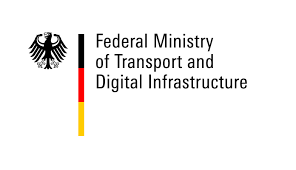dashPORT Port Energy Management Dashboard: Digital control room for analysis and control of energy flows in ports
Motivation
Ports today are confronted with different challenges. These include rising costs, increased competitive pressure and social expectations of greater commitment to environmental protection. Climate policy in Germany is also calling for a more active role for companies in the transformation of energy systems. For ports, this can mean saving energy wherever possible and actively participating in the energy market as part of the control energy market by optimising energy loads and providing flexibility. Ports are complex and embedded in national and international value chains. The consequences are, among other things, a large number of cross-actor processes and energy consumers in the port. It is assumed that a cross-actor consideration of the processes and consumers can raise previously unrecognised potentials for energy optimisation by digitally combining information for the first time, visually processing it and structuring it in a meaningful way.
Goal
The project objective is the reduction and flexibilisation of energy consumption by visualising and forecasting energy flows in the port using a "digital control room". The data of the port operator as well as of the transhipment company are automatically merged and viewed across the board. This ensures that a port and its diverse energy consumers are viewed holistically and synergies are exploited.
As an intelligent software solution, the dashPORT enables the visualisation of energy consumers and energy consumption across all actors, the derivation of measures and the identification and, if possible, avoidance of unusually high consumptions. In addition, the goal of predicting consumption is pursued by analyzing and processing internal and external data, so that targeted derivation of measures and control are possible. This should enable a long-term reduction of energy costs and CO2 emissions in ports.
Technologies
Datastream Management, Deep Learning
External Leader
Matthäus WuczkowskiScientific Director
www.nports.de
jmueller.de
www.cml.fraunhofer.de
Duration
End: 30.09.2022
Source of funding

Related projects
Flexibilitätsmanagement und Regelenergiebereitstellung von Schwerlastfahrzeugen im Hafen (sorry - only available in German)

